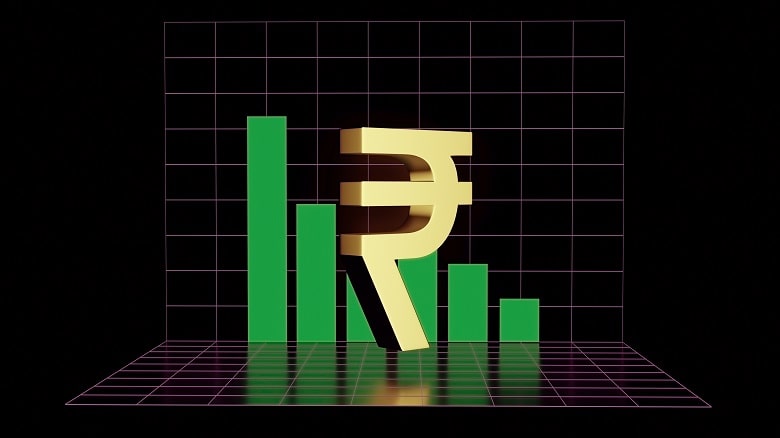Written by : Dr. Anjan Chakrabarti
Associate Professor, UGC Human Resource Development Centre
The University of Burdwan, West Bengal, India
Photo credit : Shutterstock.com
According to the latest figures published by John Hopkins University, 2,256,844 people have been under the tentacles of Coronavirus or COVID-19 with 154,350 deaths, and 571,851 people have recovered. Nearly 70 per cent of all fatalities occurred in Europe. In the US, there have been 712,184 cases with 32,823 deaths. In comparison, India, the world’s most populous country with 136 crore population, has so far reported 14,792 cases and 488 deaths. Unlike many countries, including Singapore and South Korea, India has opted for nationwide lockdown, initially for 21 days, started at midnight on March 25. It has further been extended till May 3 2020. India does not go for aggressive testing because it is logistically, economically too ambitious to afford. The entire capitalist world is now experiencing a severe economic crisis, and it is perceived that it may be worse than the worldwide great economic depression of the 1930s.
Nonetheless, the Indian economy has reached a standstill situation with multi-layered ramifications on lives and livelihoods. A rough estimate says that India is going to incur an economic loss tuned 234.4 billion USD or 0.8 per cent of the Gross Domestic Product during this lockdown period. Various forecasts projected India’s growth rate in 2021 between 0.8 per cent to 1.2 per cent. Lowest growth rate India has ever achieved since independence. India is not only experiencing an unprecedented economic crisis; instead, economic-epidemic is knocking at the door, which is perceived to have severe long term impacts on economy and society.
Reserve Bank of India (RBI) came up with financial stimuli to infuse liquidity in the economy through banking and non-banking financial institutions. Repo rate has been reduced by 75 basis point and brought down to 4.4 per cent, and the reverse repo rate has been cut down by 90 points and brought to 4 per cent. This rate cut intervention by RBI has come after central banks across the world announced rate cuts to stave off a coronavirus related recession. This monetary policy review of the RBI was rescheduled in the wake of the pandemic which originally scheduled to take place on March 31, 2020, and April 3, 2020. Cash Reserve Ratio (CRR) has also been reduced by 100 basis points (1 per cent) and stands at 3 per cent. On April 17, 2020, the RBI announced a second set of relief measures aimed at alleviating economic crisis resulted out of COVID-19 pandemic.
Repo rate refers to the rate at which commercial banks borrow money from the Reserve Bank of India (Central Bank of a country) to maintain liquidity in case of shortage of funds. Reverse repo rate is the rate at which the Reserve Bank of India borrows money from commercial banks. Cash Reserve Ratio is a specified minimum fraction of the total deposits of customers which commercial banks have to hold as reserves either in cash or as deposits with RBI
The measures include a reduction in the reverse repo rate of 25 basis points which will bring down the rate to 3.75 per cent. A special refinancing facility of 500 billion to institutions such as National Bank for Agriculture and Rural Development (NABARD), the Small Scale Bank of India (SIDBI) and the National Housing Bank (NHB) has been announced. These institutions play an essential role to meet up the long-term funding requirements of agriculture and the rural sector, small industries, housing finance companies, Nonbanking Finacial Companies and Microfinance Institutions. The cumulative impact of these measures is in addition to the Rs. 6.6 trillion (3.2 per cent of GDP) injected over the past two months.
The moot point is how far these measures are going to bring short-term and long-term economic benefits. The general observations say that it will temporarily reduce the volatility in the share market. Borrowers will feel relieved because there shall be interest cut on loan taken by industries, big, medium and small. Housing loan shall be cheaper and those who are paying Equated Monthly Installments (EMI), their interest payment will be reduced and which will be resulted in lower EMI payment. Credit requirements for the agricultural sector will be eased out. Moratorium on loan repayments and interest payments will help the small borrowers from the transport sector, especially who run SUVs, Auto-rickshaw, Battery driven Rickshaw and even a rickshaw. Those who are running micro-enterprises and trade shall derive some breathing space. Microfinance may ease the supply of consumption loans mostly given to women clubbed under Self-help group. The interest rate cut on fixed deposits will discourage the medium income groups, especially older people. Small savings might receive a hit.
However, this supply-side intervention can bring any substantial short-term change and here the scepticism occurs and demands explanation. India is experiencing an economic slowdown since the 2019s. The growth rate is slowly but steadily declining and hovering around between 4-4.5 per cent (pre- COVID 19 Pandemic period). The euphoria of 7-8 per cent growth rate got vanquished. Growth of Industrial Production (IIP) reached the nadir (-4.3 per cent). Civil Aviation, Telecom sector, Housing, and most of the manufacturing sectors were facing severe slow down. A colossal job cut was initiated by various corporate bodies or in the organised sector. Reduction corporate tax rate and bringing it down to 30 per cent failed to revive growth of industries. After the COVID-19 pandemic, serious erosion in demand has occurred. Entire supply chain got disrupted for almost every sector. Trade and Commerce, including retail businesses, transport and Communication, Tourism and Hotels, Banking, entertainment industries and every segment lost momentum to the maximum possible extent. Therefore, until and unless, the demand side intervention and income of the large section of the population are getting better off, availability of cheap credit shall make hardly any difference. The primary question the producers will confront who is going to buy, how much will they be able to afford to buy, and how much to produce? A very basic mundane macro-economic questionhas remained unanswered.
A close look at the employment scenario will partly explain why demand is getting squeezed even before the outbreak of coronavirus in India. The breakup says around 19 per cent are salaried people engaged in continuously shrinking Government sector and inthe private sector,which is fraught with grave uncertainty. A minimum job cut in the private sector should be anything between 7 per cent and 10 per cent.More than 9 per cent labourers migrate from Eastern region and Uttar Pradesh to Western and Southern part of India, and they are now jobless, penniless, and toiling hard for a two-square meal for survival. Non-industrial nature of Eastern part of Inida and overpopulated agrarian sector with small landholdings forced part of the agricultural community to migrate to overcome the economic distress. Around 40 per cent are engaged in the agricultural sector and the urban informal sector,which are facing absolute uncertainty about their economic plight. Percentage of daily wage labour is around 16 per cent in urban areas and 29 per cent in rural areas who became mostly jobless now.
Given the scenario, changes in the monetary policies are hardly going to make a dent in the sagging demand scenario. The revival of income of 80 per cent population is the key to the recovery of the economy. The government should not be bogged down to keep the IMF directed fiscal deficit of 3 to 4 per cent. Increase in fiscal deficit through the increase in expenditure on public health and cash and kind transfer to the economically marginal groups can ensure lives and livelihoods in this crucial juncture. Therefore, the entire fiscal policy requires a reorientation to save the lives and livelihood of the majority of Indians. Cut in defence expenditure matters least, an increase in social spending matter most.
Dr. Anjan Chakrabarti
Email: [email protected]
(The views expressed in this article are the author’s own and do not necessarily reflect Multidimension’s editorial stance.)




